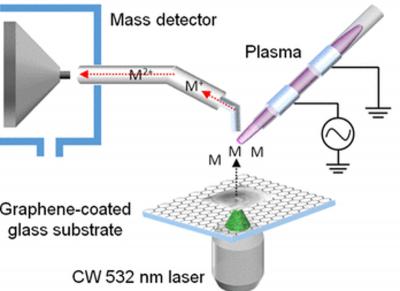Researchers at Daegu Gyeongbuk Institute of Science and Technology (DGIST) have developed a graphene-based technology that can obtain high-resolution, micrometer-sized images for mass spectrometric analysis without sample preparation. DGIST Research Fellow Jae Young Kim and Chair-professor Dae Won Moon's team succeeded in developing the precise analysis and micrometer-sized imaging of bio samples using a small and inexpensive laser.

Due to its ability to obtain high-resolution mass spectrometric images without an experimental environment using a 'continuous wave laser,' the technology is expected to be applied widely in medicine and medical diagnosis fields.
The mass spectra can be analyzed through a continuous wave laser whose energy is weaker than other lasers because of the use of a graphene substrate under the specimen.
Since graphene has very high heat conductivity and can convert light into heat, it can secure enough heat needed for specimen analysis with the small amount of light generated by the continuous wave laser. This technology is also advantageous for obtaining high-resolution analysis images, because it leaves space to observe the specimen much more closely even when using a 20x magnifying lens.
Chair-professor Dae Won Moon in the Department of New Biology explained that "Through this technology, we could greatly shorten the preparation time for analysis by omitting the specimen pre-processing step. Our next plan is to develop the technology further so it can be applied in various areas such as medical diagnosis."